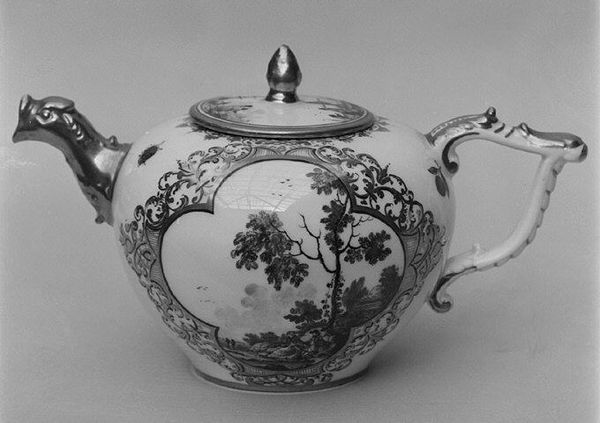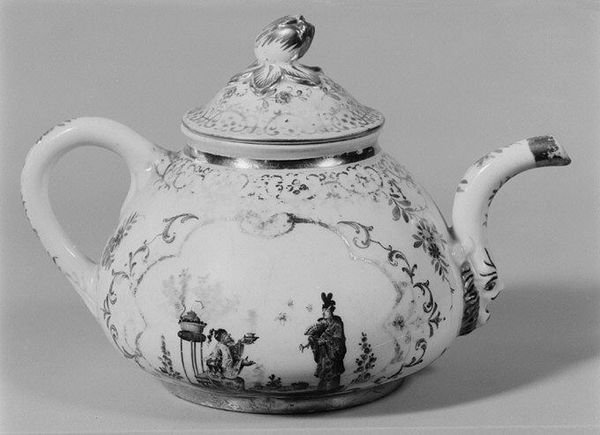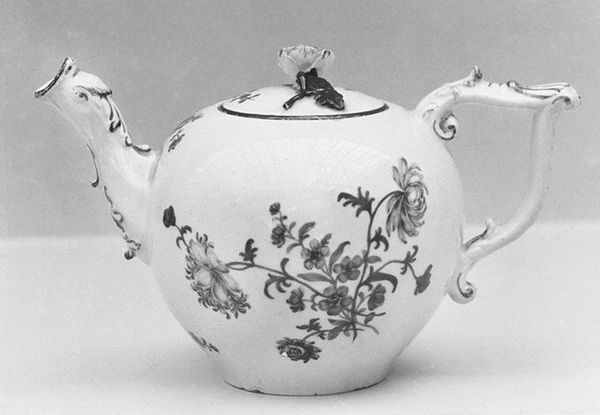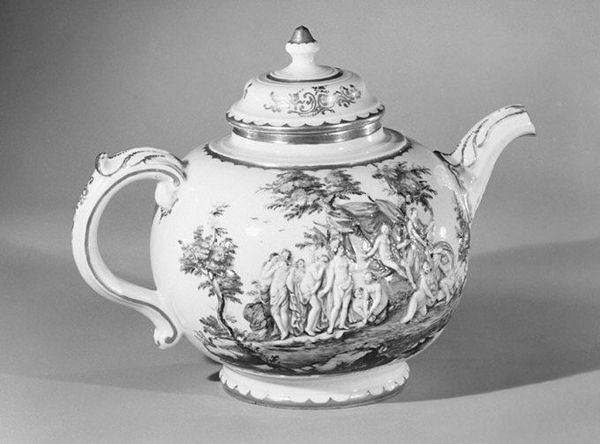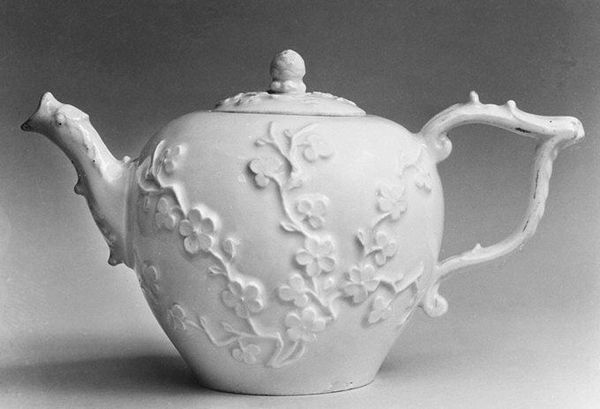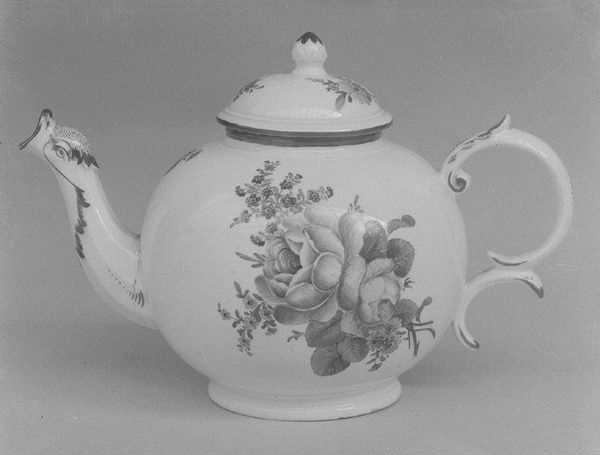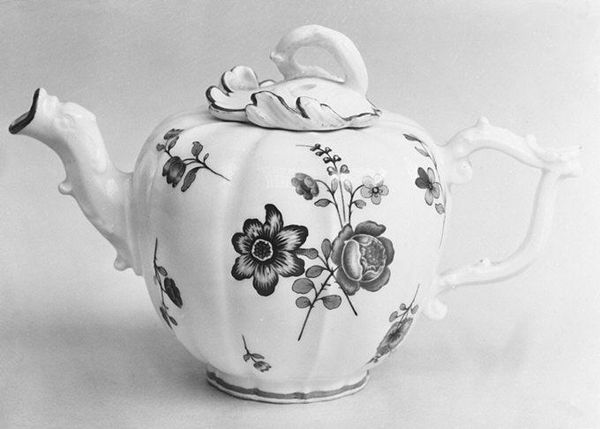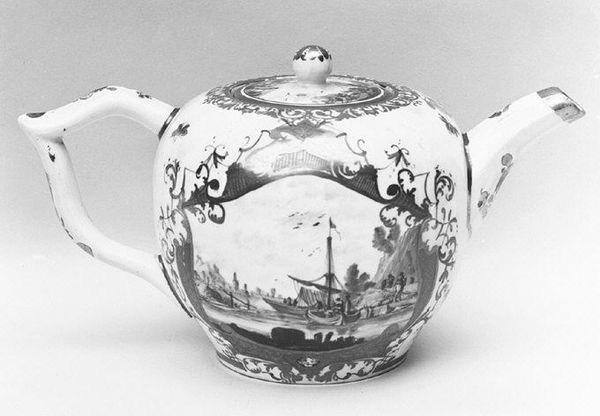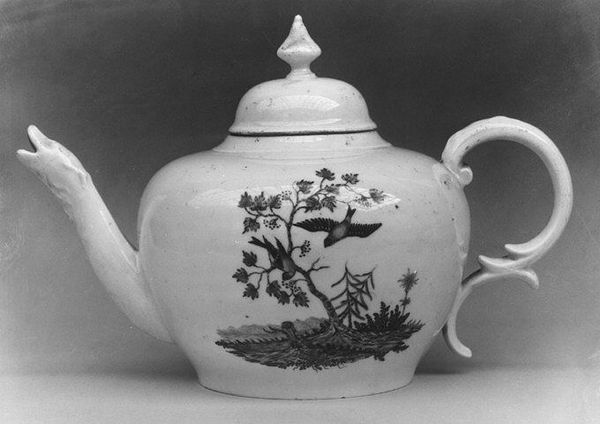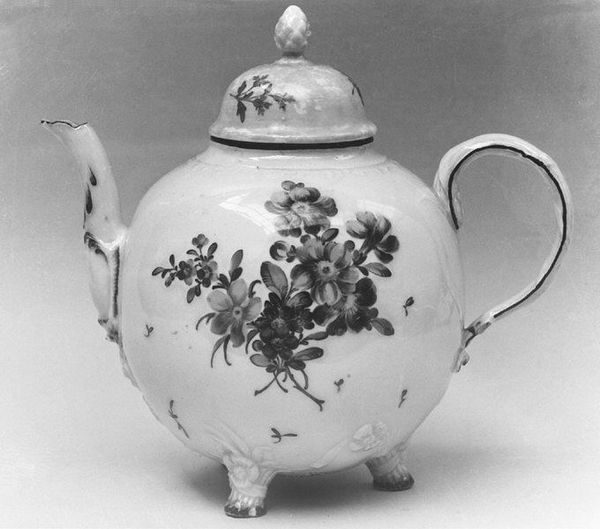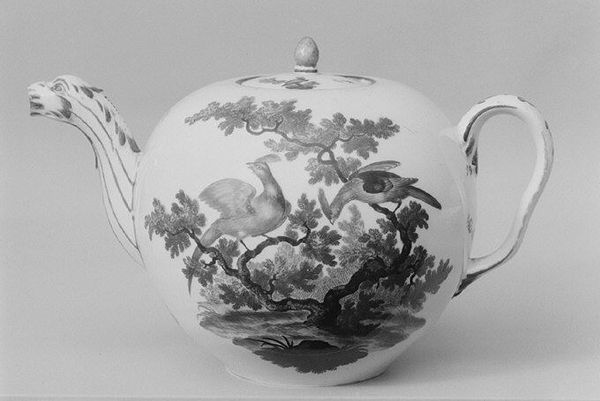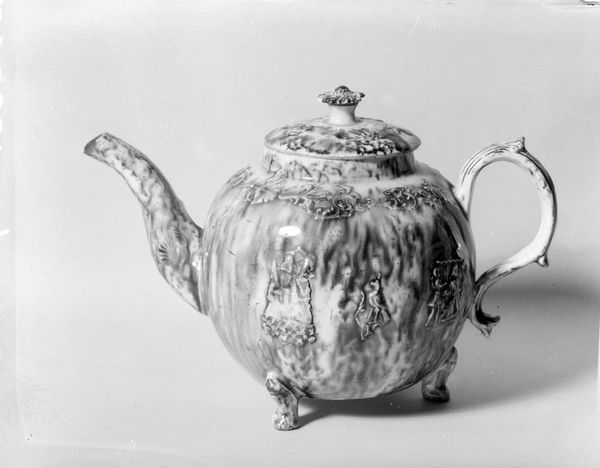
Dimensions: Height: 5 in. (12.7 cm)
Copyright: Public Domain
This teapot was made in Loosdrecht, likely in the late 18th century, from fine porcelain. The smooth, white clay body is decorated with delicate, hand-painted floral motifs in a muted palette. Consider the process: the clay had to be carefully prepared, shaped on a wheel or in a mold, fired at high temperature, glazed, fired again, and then painstakingly painted. Each stage demanded precision. The act of drinking tea was, and still is, a ritual, one that has its own cultural significance. The rise of porcelain production in Europe was tied to global trade and colonial expansion, and this one is particularly interesting, as it represents one of the earliest attempts to compete with Asian imports. The pursuit of porcelain was driven by a desire for luxury goods, and the Loosdrecht factory, like others across Europe, sought to capitalize on this demand. Note that the work involved in the production is not simply in making, but also in the mining, manufacturing, shipping and selling of the wares. It’s a global supply chain, captured in one small teapot.
Comments
No comments
Be the first to comment and join the conversation on the ultimate creative platform.
